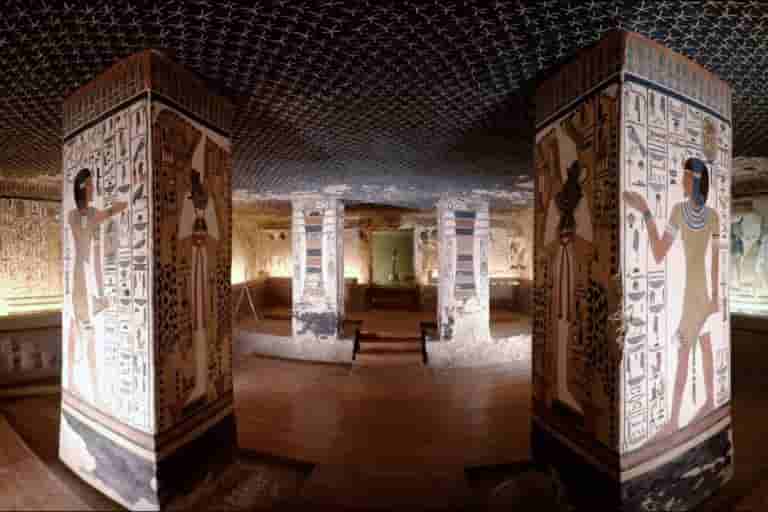Thanks to its colorful murals, this is one of the best preserved mausoleums in Ancient Egypt.
Egypt was not only one of the first civilizations of which there is a record, it was the cradle of many of the traditions and ways of life that remain in force until these days.
Its legacy is immense and can be seen in iconic structures such as the pyramid of Khufu, and especially in mausoleums for royalty. Such is the case of the tomb of Nefertari, which is considered the best preserved in the wonderful country.
The tomb of Nefertari is located within the Valley of the Queens, a section of the current necropolis of Thebes, in the city of Luxor.
The mausoleum is an amazing architectural work that was commanded to be built by Pharaoh Ramses II for Nefertari Meryetmut, the wife he loved most.
Nefertari, the first of the Great Royal Wives of Ramesses the Great, died in 1255 BC, and left behind a great emptiness.
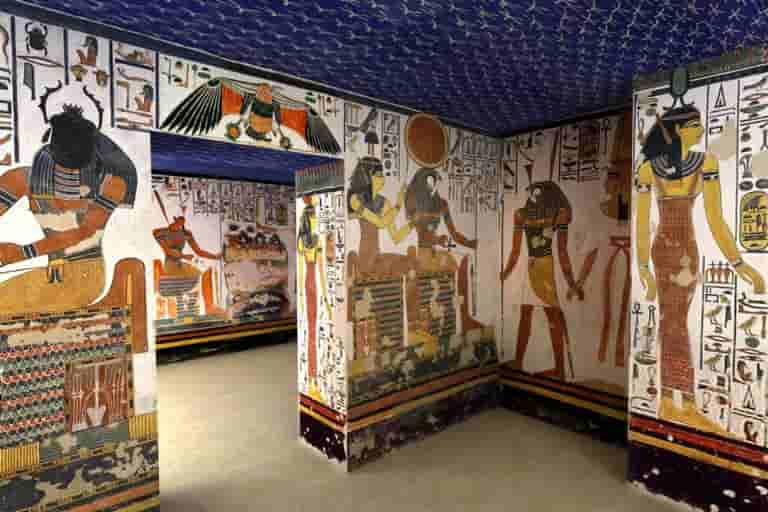
A tour of the interior of the tomb of Nefertari
From the entrance it is clear why the discovery of the mausoleum took so long. To enter there is only a small camouflage door between sandy dunes.
However, we must not get carried away by the austerity of access, because inside there are walls and ceilings covered entirely with pigments that represent the queen in its different facets.
Already inside what attracts the most attention is the intensity of the colors; it seems that the murals were painted yesterday.
Everywhere you can see representations of Nefertari; with a vulture crown, in the company of various animals and accompanied by deities such as Isis, ris, Anubis or Hathor.
Fragments of the book of the dead appear in some corners, and golden stars stand out on a dark background on the roof of the burial chambers.
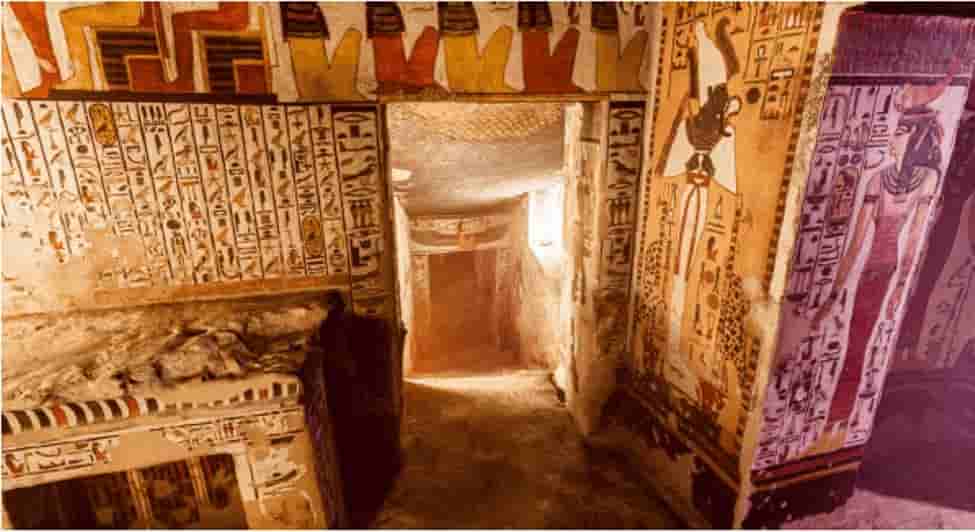
The tomb of Nefertari is a true mortuary palace because it consists of seven rooms. Although each room has its peculiarities, the most impressive is the one with the sarcophagus; to reach it you have to go down some narrow wooden stairs.
The first thing that appears in front of the visitors when they arrive are four massive columns, also illustrated, that in the center guarded the coffin where the mummified remains of the queen were. There is a maximum limit of 10 minutes to stay inside that room.
Site conservation
The tomb of Nefertari was discovered in 1904 when the Italian Ernesto Schiaparelli followed the instructions of a local.
What surprised this man and the explorers who followed him the most were the paintings and the space, there was nothing else. The grave was sacked thousands of years ago, pieces of the sarcophagus and the mummy of the queen, were stolen.
To restore its original splendor to the site, the Getty Conservation Institute in Los Angeles undertook a detailed renovation work on the murals, respecting the original colors and shapes.
From 1986 to 1992, the team was led by the famous Paolo and Laura Mora, who died in 1998 and 2015 respectively.
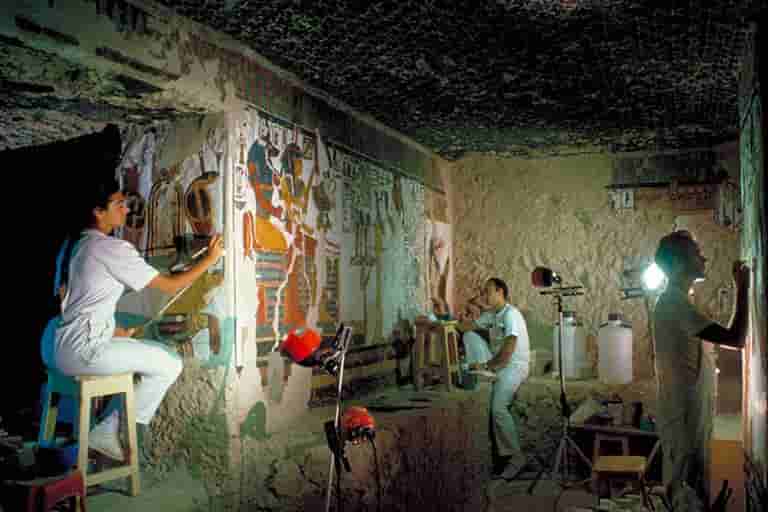
Luxor
This city, located 660 km south of Cairo, houses not only the tomb of Nefertari, but an entire necropolis of 5,000 years ago called Thebes.
Since 1979 it is considered a World Heritage Site and some of the sites that can also be visited there is the Temple of Luxor, a complex full of huge columns and sphinxes where one can get lost. Another option, to the north of the city, is the Karnak Temple, an ancient cult site built for the god of creation, Amun.
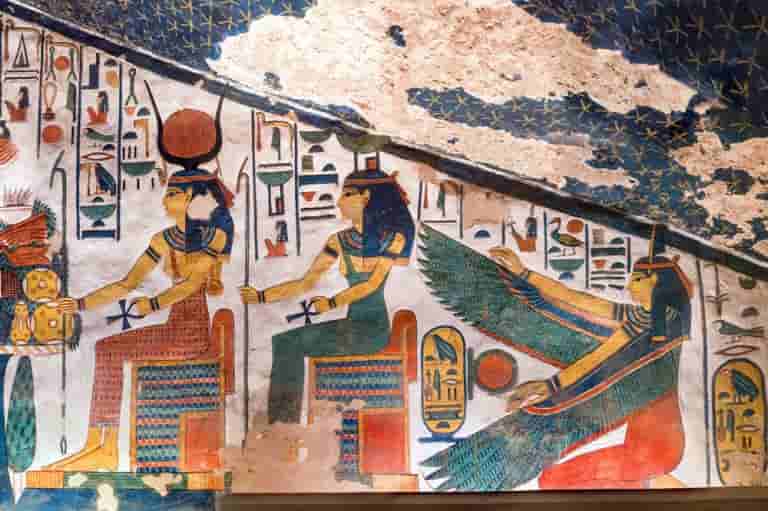
Photo: Nefertari’s hand, on the left, shows the offerings to Hathor, Serket and Maat.
